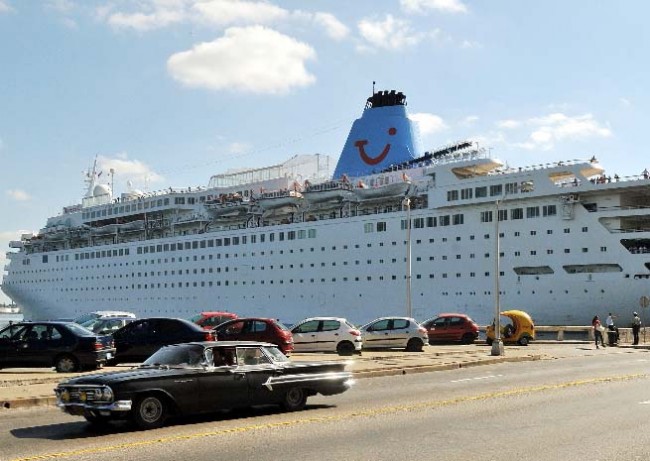
The news spread like wildfire in the old part of Havana. A black rapper drained his beer while he spoke rapidly into his cell phone. “Buddy, a big ship of foreigners just arrived. They speak English, they seem to be gringos. Let them know about the girls, I think it will work,” noted the pimp.
From the other side of the avenue, in stalls and outdoor cafes located along the coast, ordinary people watched the huge tourist vessel docked in Havana Bay with open mouths.
While the visitors wandered around town or ate a sandwich, the prostitutes, private tourist guides, illegal sellers of cigars, crafts and disks, and the musicians who sing boleros for small change immediately went on the march to see how they could gain something by offering their varied merchandise during the three-day stay in the city.
What the Thomson Dream cruise ship brought was a load of 1,500 British tourists. They disembarked with summer clothes and beer in hand, and without wasting time began to tour the historic sites of Old Havana. They went on foot, took rickety pedicabs or rode in horse-drawn carriages.
A television journalist, soberly dressed, interviewed some of the English, who were surprised by the unexpected welcome and at the same time half-frightened, when they noticed the legions of Cubans who were accosting them with all kinds of offerings. Mulattos and blondes dressed in miniscule attire, flirted shamelessly with a group of young men wearing Liverpool shirts.
Since 2004, cruise ships stopped coming to ports on the island. The drought ended on 12 November, when the Spanish ship Gemini, with more than 200 passengers from 11 countries, was in Havana. But its presence didn’t cause as much stir among the people of the capitol as this floating English hotel.
Strict control by the U.S. Treasury Office of Foreign Assets against the embargo had unleashed a witch hunt, sending notice in strong terms to the companies that own cruise ships from Spain, Germany and other countries. If they stopped in Cuba, then they could not dock in U.S. ports. Those were the days of George W. Bush.
The Tourism Ministry had already created an infrastructure in the ports of Havana, Cienfuegos and Santiago de Cuba, specialized in serving the unique guests. Foreign companies hired staff to work on Caribbean cruises. Everything was left hanging when the U.S. threatened the shipping companies that visited the island of the Castros.
The blow made Fidel Castro angry, and in 2005 he complained about having to receive rude tourists, who threw cans and garbage into the sea and didn’t care about the environment.
But enough water has passed under the bridge. Now, a relaxed Barack Obama is in charge of the White House. And since February 2008, Raul Castro, brother of the historic leader of the revolution, is leading the country’s destiny. And he is engaged in the implementation of a series of reforms to rescue the fragile economy of Cuba.
In addition to hard measures of cuts and layoffs of 1,300,000 workers, Castro II urgently needs dollars, euros or pounds, equally. Therefore, since 2010, he returned to a number of projects abandoned or left half-finished by his brother’s administration.
Among them, the construction of buildings for foreigners and the opening of golf courses for high-class tourist segments. The reopening to European cruise companies also is part of the package of measures whose main objective is to collect hard currency.
In a few months, the arrival in Havana of thousands of tourists by sea could become routine. To the delight of the prostitutes and hustlers.
Photo: EFE
Translated by Regina Anavy
January 8 2011
